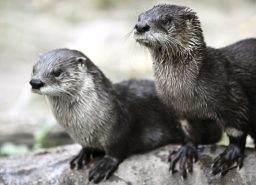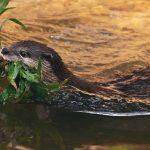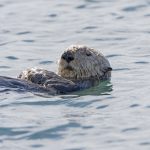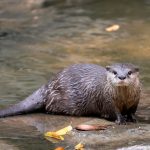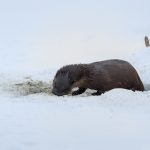Otters live all across the globe. They live in wetland environments including rivers, estuaries and coasts – on all continents except Antarctica and Australia.
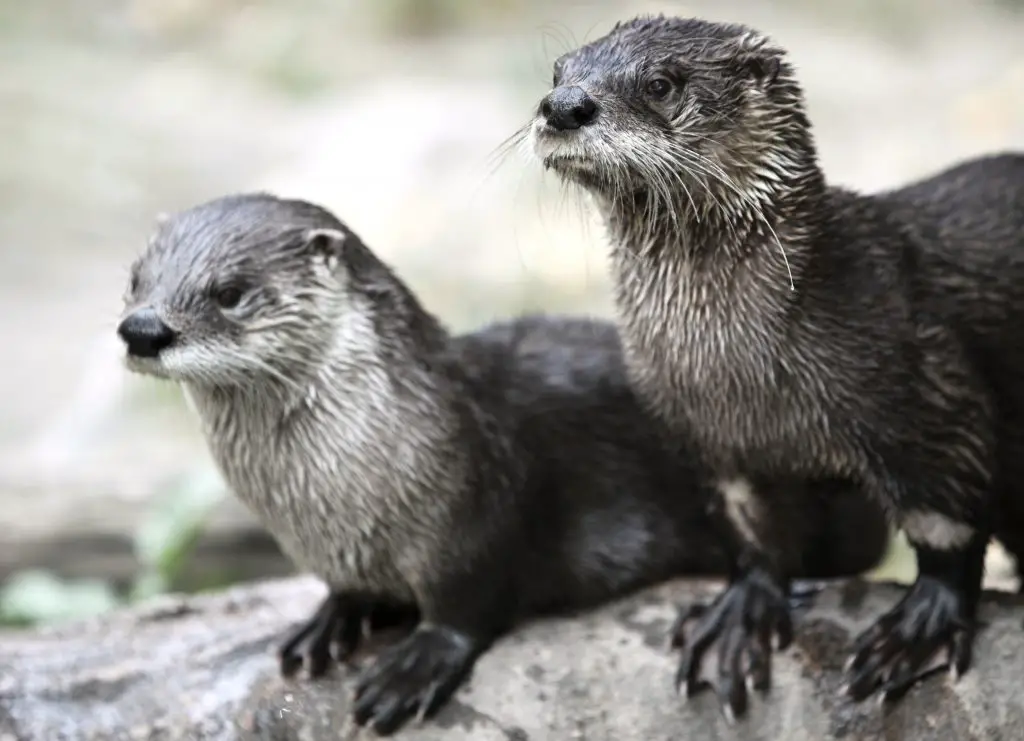
How And Where Do Otters Live?
Otters have colonized most of the planet with their adaptable diet and opportunistic habits – however, they are quite fussy about cleanliness and quiet. This means that in much of their known range they are struggling to be successful. 12 of the 13 species of otter are under threat in various locations due to habitat degradation and overcrowding.
Otters seek out clean rivers for starters – and not many of these are to be found these days. They need a large amount of food to stay warm in the water and so need to live in a place where they can consume around 20% of their body weight every day.
They also need a location that has overgrown banks and soil amenable to digging. Otters live in underground dens – called holts – on the banks of their favorite rivers and lakes – and use these dens to raise their cubs. So a shallow bank or a bank liable to collapse or trampling is no good to them.
They will travel overland some distance to search for food and the right locations. They actively avoid places where there is too much disturbance or where pollution is so great that there is not enough food for them. So even though they could technically live in many places – they actually can’t survive there.
Where Do Otters Sleep At Night?
Otters prefer the safety of the water for their den – their holts – and so have a den with its main entrance actually on the water’s edge. Ideally, this main entrance will be hidden within the dense ground cover and so not easy to see. You can usually see the chute from a nest into the water in a more exposed area or a disused holt – showing the belly-slide route in and out.
Their holts are usually commandeered from other animals – like beavers – and improved – but they will build their own. They are usually quite large in size – and with multiple entrance tunnels – two on the river and one up onto dry land. Their holts always have back doors. The main risk to their holt is flooding – and they are very used to this issue – so need a way out. As a result, otters always build at least one other exit to their holts above water level. Not to be seen or used at any other time – this above-ground hole will only serve as an emergency exit in times of trouble.
The main chamber in the riverbank will be lined with leaves, moss, and grass – and is used mainly for raising young – but otters will sleep in them too. Some otters are happy to sleep above ground – and Sea Otters will sleep floating out in the ocean – often seen holding hands!
Do All Otters Eat Fish?
Otters have a huge range of foodstuff in their diet. Although they are mainly seen on TV documentaries eating fish – they will also catch and eat mollusks and crustaceans as well as amphibians and reptiles. They are quite opportunistic in their feeding habits.
However, fish do tend to make up around 80% of their diets as they are easy to catch and abundant in the habitats otters choose to live in. Otters do travel over land quite a lot and can dig soil – so they always have something to eat even if the rivers run dry in places.
Sea Otters hardly ever eat fish though – preferring to go hunting on the sea bed for urchins, clam, and crabs. With their kelp-filled coastal habitats, they have plenty of choice for diet – and they need it too. Otters don’t have a layer of blubber to keep them warm – so they have to eat more food than a land-dwelling animal to produce enough heat to stay warm in the sea.
They have also been using tools for feeding too. Many a video online shows them using stones and small rocks to not only crack open tough shells but also to smash mollusks free off their rocky attachments.
Clever litter critters indeed – and they aren’t the only ones. The Asian Short-clawed Otter was actually trained by fishermen to retrieve fish from rivers for them in exchange for treats. Smart little cookies!

